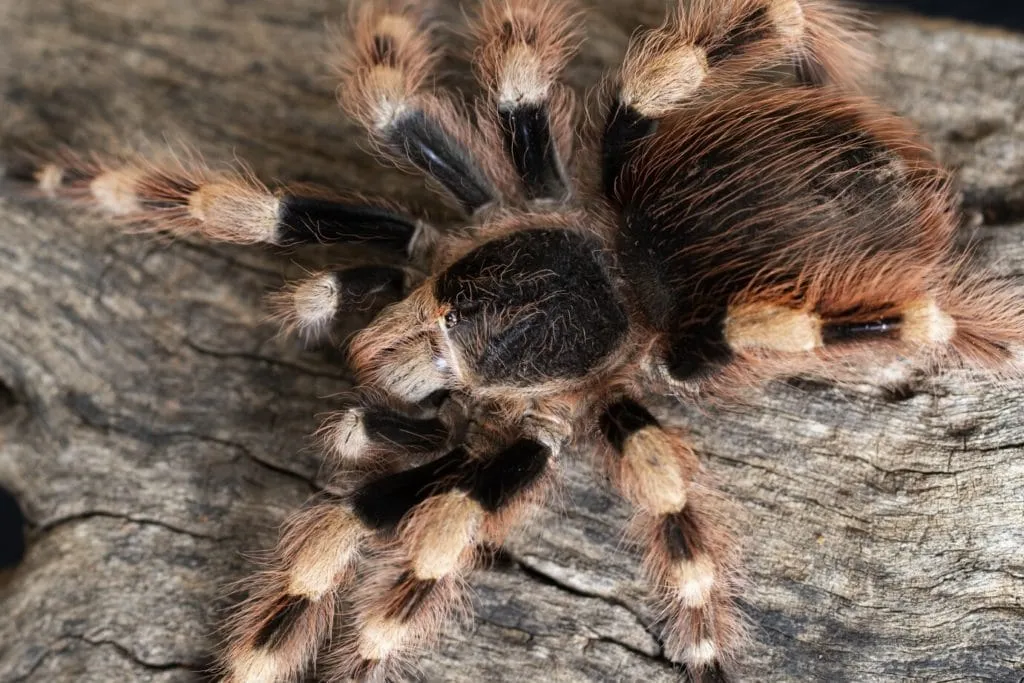What is a Wolf Spider
Wolf spiders, belonging to the family Lycosidae, are a diverse group of arachnids found worldwide. These spiders are known for their hunting prowess and their habit of actively pursuing prey rather than building webs to trap them. They are typically ground-dwelling creatures, often found in grassy areas, forests, and even human dwellings. Wolf spiders are solitary hunters, and their name comes from their hunting style, which resembles that of wolves, stalking and chasing their prey. They play a crucial role in ecosystems as predators, helping to control populations of insects and other small invertebrates. The size and appearance of wolf spiders can vary greatly depending on the species, with some being quite small while others are relatively large and imposing. These spiders are generally not aggressive towards humans, but they will bite if provoked.
Appearance and Characteristics
Wolf spiders have a distinct appearance that helps differentiate them from other spider species. They typically have a robust, hairy body with a characteristic pattern of stripes or markings on their carapace (the upper part of the cephalothorax) and abdomen. Their color varies from brown to gray or black, often providing camouflage in their natural habitat. They have eight eyes arranged in three rows, with two large eyes in the middle row that give them excellent vision, especially at night. This excellent eyesight aids them in hunting. Unlike some other spiders, wolf spiders do not build webs to catch their prey; instead, they actively hunt, relying on their speed, agility, and eyesight to catch insects, other spiders, and occasionally small vertebrates. Wolf spiders also possess strong jaws, or chelicerae, which they use to subdue and inject venom into their prey.
Habitat and Behavior

Wolf spiders are found in a wide variety of habitats around the world, including grasslands, forests, gardens, and even human dwellings. They are adaptable creatures, able to survive in various climates and environments. Their behavior is primarily focused on hunting and reproduction. During the day, they may hide under rocks, logs, or leaf litter to avoid predators and the sun. At night, they become active hunters, stalking their prey on the ground. Wolf spiders are solitary creatures, with the exception of mating and maternal care. The females carry their egg sacs attached to their spinnerets until the spiderlings hatch. Once the spiderlings hatch, they climb onto their mother’s back and are carried around for several weeks before becoming independent. This maternal care is a distinctive feature of wolf spiders.
What is a Tarantula
Tarantulas are large, hairy spiders belonging to the Theraphosidae family. These impressive arachnids are known for their size, impressive appearance, and relatively docile nature, making them popular pets for some people. Native to tropical and subtropical regions around the world, tarantulas come in a diverse array of colors, sizes, and patterns. They are primarily ground-dwelling spiders, although some species may also inhabit burrows or trees. Tarantulas are primarily nocturnal hunters, using their fangs to inject venom that paralyzes their prey, which can include insects, other spiders, and occasionally small vertebrates. Despite their formidable appearance, most tarantula species are not considered highly venomous to humans, and their bites are often compared to a bee sting. However, their size and the presence of urticating hairs can still cause irritation and discomfort.
Appearance and Characteristics
Tarantulas are easily recognized by their large size, hairy bodies, and imposing fangs. Their bodies are typically covered in a dense layer of hairs, which can vary in color and texture depending on the species. They have eight eyes arranged in two rows, providing them with good vision, although not as acute as some other spiders. Tarantulas have powerful chelicerae, or fangs, used for injecting venom and subduing prey. In addition to their fangs, many tarantula species possess urticating hairs on their abdomen, which they can flick off to deter predators. These hairs are barbed and can cause skin irritation and discomfort. The colors of tarantulas vary greatly, ranging from brown and black to vibrant hues of blue, orange, and red. Their size can also vary, with some species having a leg span of over 10 inches, making them among the largest spiders in the world.
Habitat and Behavior

Tarantulas are found in a variety of habitats, including tropical rainforests, deserts, and grasslands. They are typically ground-dwelling spiders, though some species may live in burrows or trees. Their behavior is primarily nocturnal, with tarantulas spending the day in their burrows or hiding places and emerging at night to hunt. They are ambush predators, waiting for prey to come within striking distance before launching their attack. Tarantulas typically feed on insects, other spiders, and occasionally small vertebrates such as rodents, lizards, and birds. They are solitary creatures, except during mating season. Female tarantulas can live for many years, while males have a shorter lifespan. Mating rituals often involve complex displays of courtship, and the female may sometimes cannibalize the male after mating. The females lay eggs in silken sacs, which they guard until the spiderlings hatch.
Top 5 Differences Wolf Spiders vs Tarantulas
Size and Body Structure
One of the most obvious differences between wolf spiders and tarantulas is their size and body structure. Tarantulas are significantly larger than wolf spiders, with some species having a leg span of over 10 inches. Wolf spiders, on the other hand, are typically smaller, with most species ranging from 1/2 to 2 inches in body length. The overall body structure also differs, with tarantulas having a more robust and stocky build, while wolf spiders tend to be more slender and agile. The size difference is a key factor in distinguishing between the two, as tarantulas are among the largest spiders in the world, whereas wolf spiders are generally medium-sized.
Hair and Sensory Organs

The presence or absence of certain types of hairs is another distinguishing factor. Tarantulas are covered in dense, often colorful hairs, and many species also possess urticating hairs that they can flick off as a defense mechanism. These urticating hairs can cause skin irritation and discomfort. Wolf spiders, while also hairy, do not have urticating hairs. Instead, their bodies are covered in more typical spider hairs, which serve primarily as sensory organs. Both types of spiders have eight eyes, but their arrangement and visual acuity can differ slightly. Wolf spiders have relatively better eyesight, which they use in hunting. Tarantulas rely more on detecting vibrations and movement.
Venom and Bite
While both wolf spiders and tarantulas are venomous, their venom and biting behaviors differ. Tarantulas typically have a relatively mild venom, with their bites often compared to a bee sting. However, their large fangs can still inflict a painful bite. Wolf spiders also possess venom, but their bites can sometimes be more potent, causing localized pain, swelling, and itching. Neither spider is generally considered deadly to humans, but the effects of a bite can vary depending on the individual and the species of spider. The use of their venom is primarily for subduing prey, and in the case of both spiders, they will typically only bite humans as a last resort, if threatened or provoked.
Webs and Hunting Techniques
One of the most significant differences lies in their hunting strategies. Wolf spiders are active hunters, meaning they actively pursue their prey rather than waiting for it to come to them. They do not build webs to catch their food but instead rely on their speed, agility, and eyesight to hunt. Tarantulas, on the other hand, are primarily ambush predators. They may construct silk retreats or burrows but do not build elaborate webs for catching prey. They wait for their prey to come within striking distance, then quickly pounce to subdue them. This difference in hunting technique is a key characteristic that distinguishes wolf spiders from tarantulas.
Lifespan and Reproduction

The lifespans and reproductive strategies of wolf spiders and tarantulas also differ. Female tarantulas can live for many years, often over 20 years, while males typically have a shorter lifespan, often only a few years. Wolf spiders generally have shorter lifespans than tarantulas, with females living for a few years and males even less. Both spiders reproduce sexually, but their mating rituals and reproductive cycles vary. Tarantulas often have elaborate courtship rituals, and the female may sometimes eat the male after mating. Wolf spiders also have mating rituals, but they are less complex. Both spiders lay eggs, but they care for their young differently. Wolf spiders carry their egg sacs and spiderlings, while tarantulas typically guard their eggs in a silk sac.
Common Misconceptions
There are many misconceptions about wolf spiders and tarantulas, often fueled by their appearance and the fear of spiders. One common misconception is that all spiders are dangerous. While some spiders are venomous, most are not harmful to humans. Another misconception is that all large, hairy spiders are tarantulas. Many other types of spiders, including wolf spiders, can be large and hairy. People also often believe that spiders are aggressive and will attack humans. In reality, spiders generally avoid humans and will only bite if they feel threatened or provoked. It’s important to rely on factual information and accurate identification to avoid unnecessary fear and misunderstanding regarding these creatures.
Are Wolf Spiders and Tarantulas Dangerous
Neither wolf spiders nor tarantulas are generally considered highly dangerous to humans. Their venom is usually not potent enough to cause serious harm, and bites are rare unless the spiders feel threatened. However, bites can be painful, and some individuals may experience localized reactions such as pain, swelling, and itching. In rare cases, an allergic reaction may occur. It’s important to avoid provoking spiders and to seek medical attention if bitten. The primary danger from these spiders is not from their venom but from the potential for a secondary infection at the bite site. Proper care and cleaning of the wound are important to prevent complications. Overall, wolf spiders and tarantulas play an essential role in their ecosystems and are not typically a significant threat to human safety.
Conclusion

In conclusion, while both wolf spiders and tarantulas are arachnids, they are distinct species with notable differences. Wolf spiders are active hunters, known for their speed and agility, while tarantulas are larger, often ambush predators. Their sizes, appearances, hunting techniques, and habitats are all different. Understanding the differences between these spiders helps debunk common misconceptions and appreciate their unique roles in the natural world. While both may appear intimidating, it’s important to remember that they are usually not aggressive and play a vital role in controlling insect populations. Learning about these fascinating creatures can foster a greater appreciation for biodiversity and reduce unwarranted fear.
